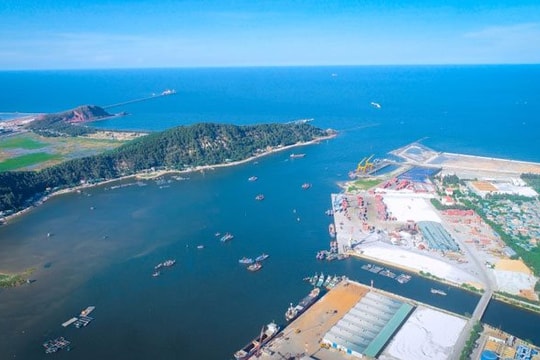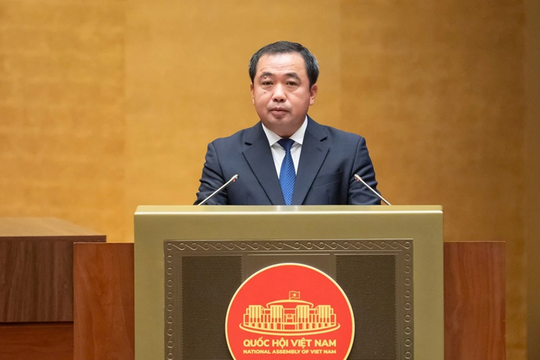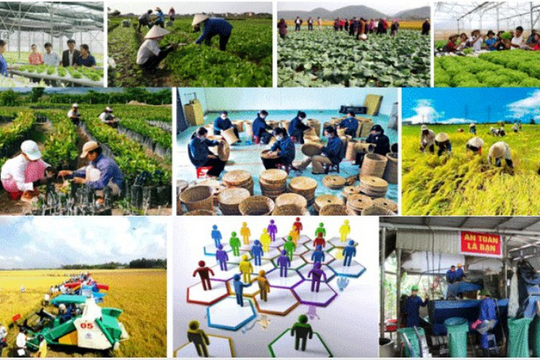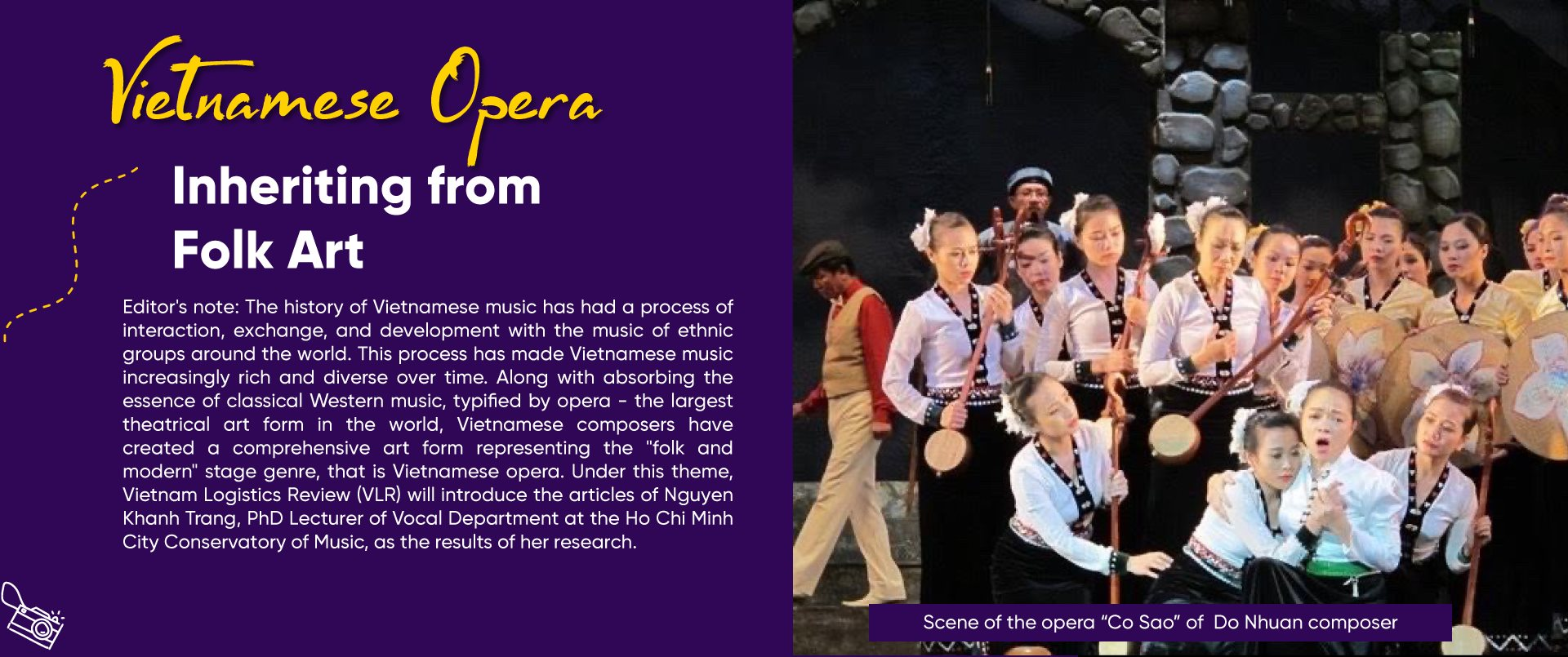
.png)
Vietnamese composers, when given the opportunity to learn and appreciate the beauty of culture, art, and the essence of world music, both in the East and West, always maintain an awareness of preserving the cultural, artistic, and musical identity of the nation. Composers and performers always tend to present the characteristics, cultural identity, and spirit of the nation in their artistic creations. Especially, Vietnamese composers have inherited the folk essence from the source of folk songs, traditional music genres such as Tuong, Cheo, Cai Luong, etc.

The inheritance of the folk essence in Vietnamese operas is clearly shown through many factors such as music materials, expressive language, and orchestra composition. Regarding this issue, composer Do Nhuan (who has composed three Vietnamese operas including Miss Sao, The Sculptor, and Nguyen Trai at East gate) wrote: "In Vietnam, there are three folk opera models, including Tuong, Cheo, Cai Luong. Why don't I rely on one of these three types of stage music to build our opera to clearly show the inheritance of our folk heritage?"
Music material is the "initial element that evokes musical emotions." Music material can be folk songs, folk music, familiar rhythms in daily life, even impressions, emotions in literary works, poetry, painting, etc. expressing the soul, culture of the nation. Composer Do Nhuan inherited the folk songs of the Northwest region, along with the common features of ethnic music, to create character themes, singing and dancing styles, instrumental music, etc. throughout the scenes in the opera Miss Sao. Typical examples are the dance and singing styles of the Thai ethnic group, portraying familiar pictures of their collective labor and daily activities such as Xoe Hoa or Inh la oi! Xao noong oi!, etc. (Scene 11 Act 1; Scene 26 Act 3), singing using the pentatonic scale, the sound of the Northern mountainous ethnic Thai folk music (Scene 4, 5, 10, 13 Act 1). The author is not limited to the singing style of the character Sao in the Thai folk song melody but also uses the material of Cheo music in the main theme when expressing Sao's painful and distressed emotions (Scene 2, 12 Act 1), etc.
The ethnic music materials of the Central Highlands are vividly and frequently used in the opera "On the bank of K'rong Pa" by composer Nhat Lai or in some sections of the opera "My love" by composer Nguyen Dinh Tan. When describing the character Gia Ma Tong, Nhat Lai builds the singing section with a storytelling style of the epic of the Central Highlands with a deep, powerful voice and the sound of the goong on the hands of the village elder (scene 7, act 1). The melody of the Gia Rai folk song "Ben nuoc" is used to express the longing and distress in the love and the agony of the girl H'Lim when falling into a serious tragedy - losing her mother, and her lover Y San being suspected of killing H'Lim's mother (scene 14, act 1). The ethnic music materials of the Central Highlands are also used by composer Nguyen Dinh Tan to describe the extreme pain, madness, and agony of the Pơ Lang mother before the death of her child (scenes 6 and 7, act 1). In the opera "The sculptor," the theme of the music carries the solemn tone of the Central Highlands, mixed with the tender melodies of the South Central region. The ethnic music materials of the Central Highlands are used clearly to express a pure, holy love and the compassion of the girl H'Nuon for her lover (scene 18, act 2).
When composing the opera "Nguyen Trai at East gate," composer Do Nhuan used a wide range of ethnic music materials such as Quan Ho Bac Ninh folk songs, Southern folk songs, Ca tru, Cheo, and Tuong, etc. In the context on the banks of the To Lich River on the afternoon of the 30th of Tet, Miss Truc (Nguyen Thi Lo) and other girls are going to the Tet market. Miss Truc meets the hero Nguyen Trai here as a predestined fate. The author portrays this charming, graceful, talented girl through the melody of the Bac Ninh Quan Ho folk song "Cay truc xinh" (scene 1, act 1, part 3). When performing the musical talent of playing and singing and the inner emotions of the character Dao Xuan, the author used and mixed many materials in traditional music such as duet singing following the style of xuong - xo with the sound and rhythm of the cheo boat song from the Northern folk songs. The hoarseness in the throat while singing in the co ca tru style to increase the resonance, echoing sound in the singing style. The melancholic melody with the complaining tone in the Southern folk songs Ly lu la (scene 6, act 1, part 1). In the context where Dao Xuan and Truc are playing music and drinking with two Chinese officials to make them drunk to help Mr. But escape, the author used a transformed melody from the lullaby song (Northern folk songs) with the Ca tru sound in the opening line to create a variation in the music (scene 18, act 2, part 2).
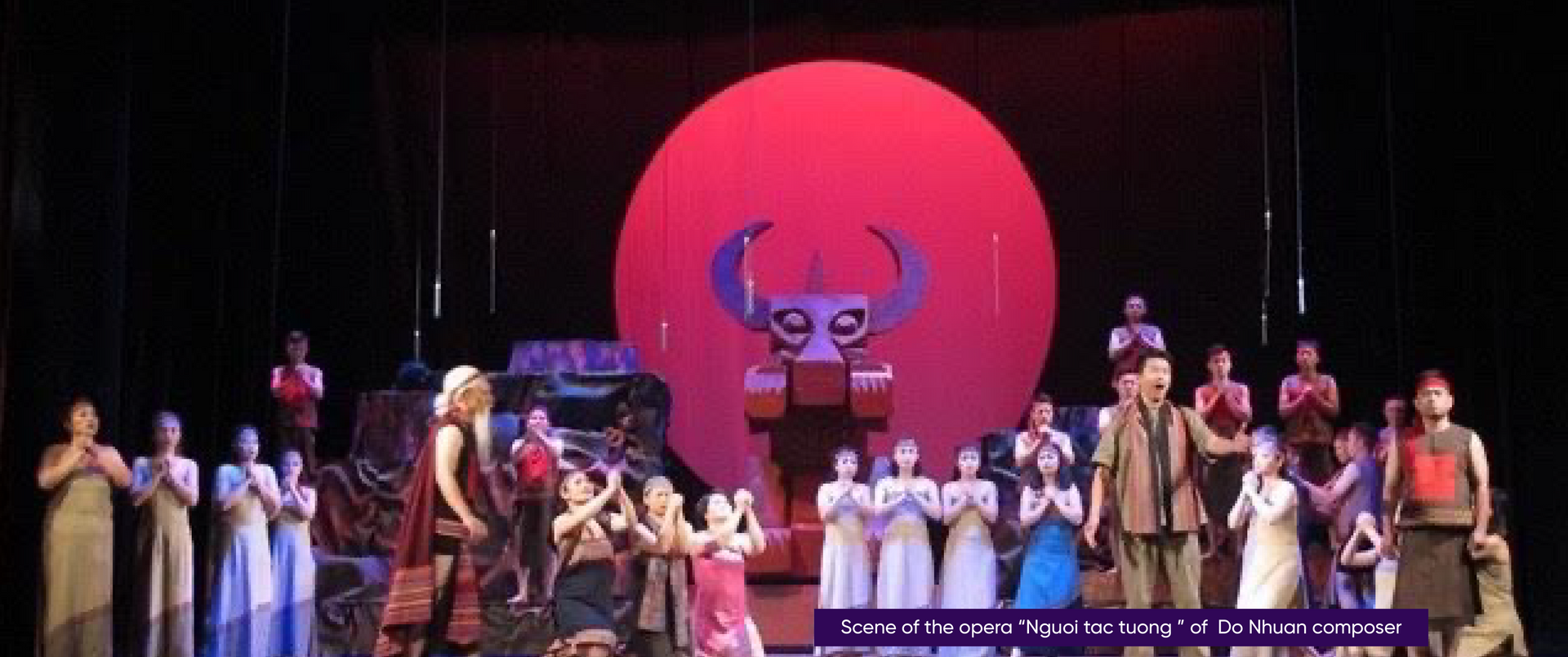
The materials of Southern folk music were used seamlessly throughout the opera Bong Sen by two composers, Hoang Viet and Luu Huu Phuoc. The most vivid representation of this was in the melody of the song performed by the character of the younger sister, with the lyrics being the familiar folk song "What is more beautiful than the lotus in the pond...," which is imbued with the essence of Southern folk music. In the opera "The Guardian of the Alcohol," musician Ca Le Thuan also utilized Southern folk music materials in many singing sections. At the beginning of the work, the vocalise part of the girl is suffused with the essence of the South with a melancholy tone of Nam music and the style of singing in the river and water tunes, introducing the background of the vast homeland river and the character of the old man guarding the alcohol (scene 1, act 1). The most unique part is the scene of the "Cai luong" singing with the song "Tinh Anh Ban Chieu" next to the bustling market scene. The image of the gentle and vast Hau River, associated with the bustling life of the people in the river region, blends with the melodious echoes of the "ho" singing, vast as the sky and land of Hau Giang (scene 6, 7, 8, act 2).
In the opera "Red Leaves" by Composer Do Hong Quan, the rhythms of working songs are reflected through the phrases: "ho khoan do khoan, o huay do..." robust, optimistic, alternating with the opening singing phrases that revive the chanting atmosphere in the Ma River "ho" or the rustic, salty flavor of the Nghe Tinh’s Vi Dam folk songs (scene 9, act 1). In the context of the mountain deity imparting power to the red leaves to revive the girls' souls, when the cave door opens, the girls turn into fairy nymphs flying up into the blue sky... The author is very skillful in expressing the revival of the eight sacrificed girls in the "Tam Co" cave by repeating the Nam mo A-Di-Da Phat prayer by the soprano voice for 24 measures of music (scene 33, 34, act 2).
The national identity in Vietnamese music has always had a powerful force in the consciousness, emotions, thoughts, and artistic creativity of the artists. From the lullabies of mothers, folk songs, ly tunes, ho phrases... to the nuances of daily labor life, the customs and practices of the 54 ethnic groups of Vietnam are vividly depicted through music by the musicians. They skillfully employ the melodies of folk songs, the ancient tunes in traditional music, the tonalities of the five-tone system of the ethnic group, and various types of stage arts such as Tuong, Cheo, Cai luong, etc. to continue to create materials for Vietnamese opera - a form of music theater that originally comes from the West but has become familiar and close to the sentiments and cultural identity of the Vietnamese people.


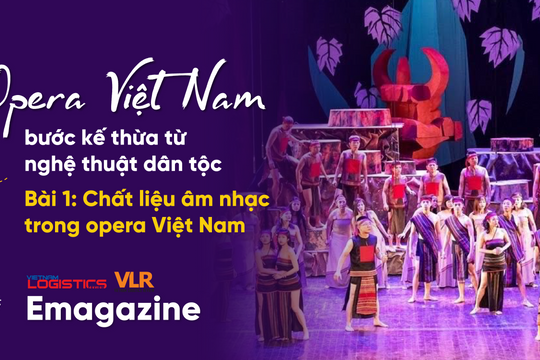
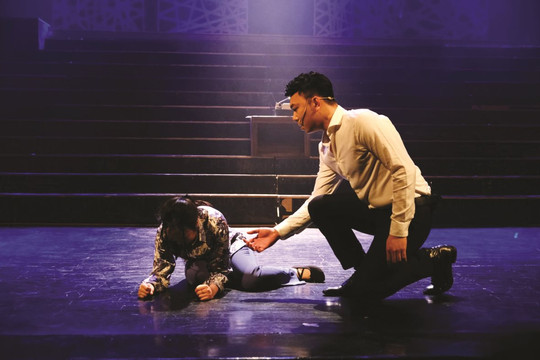
.png)









